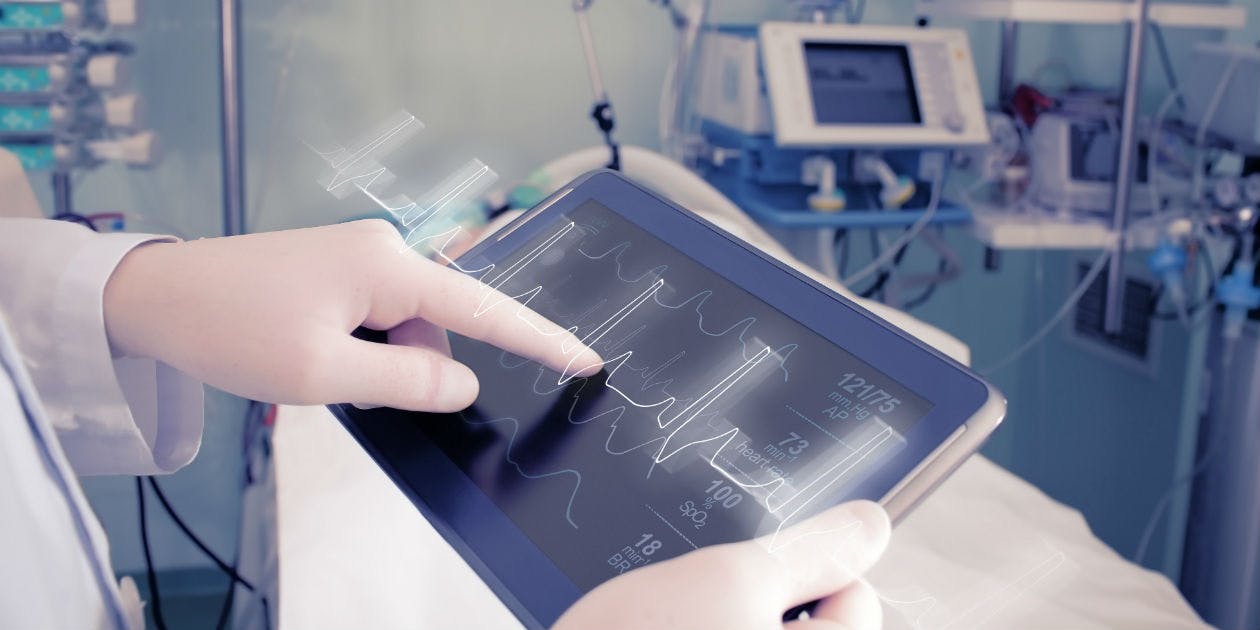There is a significant upward trend of clinical studies focused on infant and neonatal breathing patterns, conducted with respiratory inductance plethysmography, or RP. RP is a noninvasive sensor technology that measures the independent respiratory waveforms of the rib cage and abdomen from which pulmonary metrics including volume and respiratory events may be derived. In many of these clinical trials, VivoSense® Software is used to analyze and isolate specific metrics from the raw RP data.
In Scoring Tools for the Analysis of Infant Respiratory Inductive Plethysmography Signals, published by the Department of Biomedical Engineering at McGill University, researchers state that there is a general consensus that RP is the preferred method of respiratory data collection for infants, because it is non-invasive and not effort dependent. The journal highlights that the American Academy of Sleep Medicine recommends the use of an airflow sensor to measure airflow and ventilation. However, airflow sensors are not practical enough to be worn by infants long term, as they obstruct the infant’s face, preventing normal eating and sleeping activity. Therefore, the AASM recommends the RP sensor for continuous respiratory monitoring.

RP monitoring is widely used for many infant respiratory studies, including investigation into respiratory success in ventilated infants, SIDS, and neurological disorders that affect the normal respiratory pattern. RP monitoring can also produce data that airflow sensors cannot, related to analyzing individual rib cage and abdominal band respiratory movements and the co-ordination of the diaphragm in breathing.
An example of this is seen in a recent article published in 2016; Quantitative Analysis of Thoracoabdominal Asynchrony in Pediatric Polysomnography, by Nemours duPont Hospital for Children. The purpose of their study was to determine if the average phase angle (the measure of relationship between the chest and abdominal respiratory volume waveform), measured with RP, correlates to the obstructive apnea index in children with current respiratory sleep issues. They found that the average phase angle (APA) has a significant positive correlation with obstructive apnea index, which could make APA a clinical indicator of obstructive sleep apnea, in combination to other established indicators. RP is becoming more prominent as a diagnostic tool as well as a tool to discover unique respiratory diagnostic indexes.
VivoSense has helped establish RP respiratory monitoring as a reliable endpoint for clinical trials. Currently, VivoSense is active in respiratory clinical trials monitoring and data analysis in 3 Phase II Clinical Trials, with customers including Biogen and F. Hoffmann-La Roche Ltd
The market for respiratory monitoring is on the rise. According to a recent article Kalorama Information, from Advanced Patient Monitoring Systems, monitoring respiratory technologies are shifting to more user-friendly devices, that allow expansion into the home segment, including RP technology for clinical studies. It states: “by 2021, the market is expected to increase to $8.5 billion globally, showing an average annual increase of 3.6%.”
Robles-Rubio, Carlos Alejandro et al. “Scoring Tools for the Analysis of Infant Respiratory Inductive Plethysmography Signals.” Ed. Mathias Baumert. PLoS ONE 10.7 (2015): e0134182. PMC. Web. 18 Oct. 2018.
Remote Patient Monitoring & Telemedicine Market (Sleep, Diabetes, Vital Signs/EKG and Other Monitors). Kalorama Information. September 2016.
